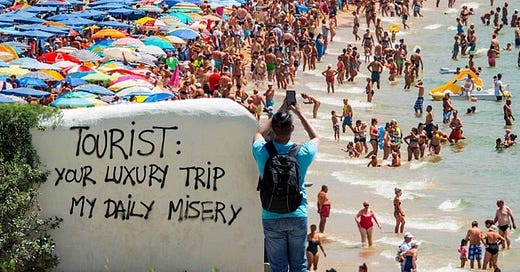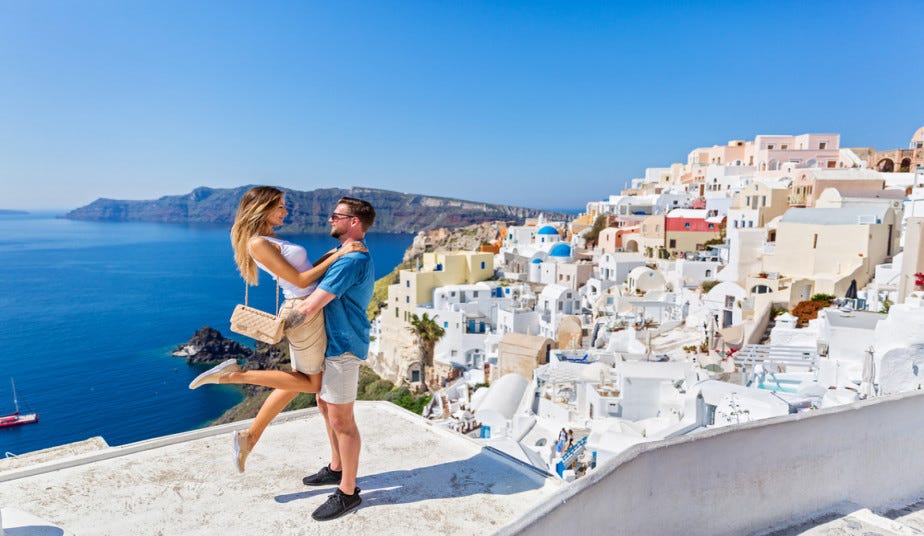✈️ The True Meaning of Tourism Speak
How language shapes travel experiences, power, and cultural responsibility.
🌟 Introduction
Tourism is no longer just sightseeing—it’s a semiotic field rich with symbols, identity markers, and coded narratives. As I explored in “The Evolving Landscape of Global Tourism” (QRCA Views), modern travellers seek cultural immersion, authentic experiences, and narratives shaped by their identities and media consumption.
But what does our language around tourism really convey? Is tourism about broadening horizons, or packaging identity, exploiting places, and reinforcing privilege under appealing rhetoric?
🔍 What It Says vs. What It Means
🧿 Cultural Immersion
What it says: In-depth engagement with local life.What it means: Often superficial experience filtered through Instagram or tour guides, co-opted as an exotic commodity.
🗽 Authenticity
What it says: Real, unfiltered connection to place.What it means: A curated ideal, often stripped of context or reduced to postcard images, that consumers expect to see.
🧑🤝🧑 Overtourism
What it says: Popular destinations are crowded.What it means: Economic and cultural exploitation of local residents, transformed into background figures for visitors’ memories.
🧉 Creative Economy Tourism
What it says: Visits tied to cultural exports (e.g., Korean dramas).What it means: Emotional manipulation—tourists drawn by fantasy narratives, not local realities.
🏛️ The Semiotics of Tourism
🍱 Symbols as Storytellers
Every monument, meal, and craft functions as a signifier in a broader narrative about heritage and identity. Understanding how travellers encode these symbols tells us who’s welcome—and who isn’t.
💝 Narrative Tourism
Destinations aren't promoted as places—they’re promoted as stories: spiritual, romantic, nostalgic. These narratives align with traveller segments—from pilgrims to influencers.
👀 Traveller Identity Codes
Travellers arriving from different cultural backgrounds—Chinese honeymooners, Indian spiritual seekers, and Western influencers—project unique meanings onto the same destination.
✨ Overt vs. Covert Consumption
“Sustainability” is promoted loudly; economic motives are often hidden. Real discourse (local suffering, cultural erosion) is swept under tourism’s glossy surface.
⚡ The Impact of Tourism Speak
🌍 Local Resentment & Cultural Erosion
Venice and Barcelona demonstrate how overtourism turns locals into obstacles, eroding their sense of place and agency.
🧭 Emotional Mismatch
Visitors arrive with romanticised expectations—often leaving disappointed, which can lead to sanitised experiences or abrupt disconnects.
💰 Economic Inequality
Tourism revenue often centralises power, reinforcing class divides and reducing communities to service roles.
🌱 Environmental Strain
Carbon-intensive travel undermines claims of ecological responsibility, while local ecosystems struggle to cope with the pressure of tourism.
💡 Actionable Insights
🎯 Design with Semiotic Awareness
Cultural strategists and tourism planners should align their offers with deeper cultural codes, rather than optimising for photo shoots.
🧩 Segment Travellers Thoughtfully
Recognise that travellers from Chinese, Indian, Western, and other cultures interpret places differently. One-size-fits-all storytelling doesn’t work.
♻️ Balance Exposure with Preservation
Manage scale—rotate access, create alternative routes, and safeguard local vitality.
🤝 Decenter the Tourist Narrative
Let locals define legitimate tourism—and consciously resist narratives that turn culture into spectacle.
🎤 Conclusion
Tourism speak—terms like “authentic,” “immersive,” and “sustainable”—carry culturally loaded meanings riddled with contradictions. To create more meaningful travel, we must unmask the narratives buried beneath appealing photos and surface-level ambitions.
By decoding these linguistic layers, we empower destinations, travellers, and researchers to shift from snapshots and sound bites to genuine connections—and from fleeting visits to lasting impact.






